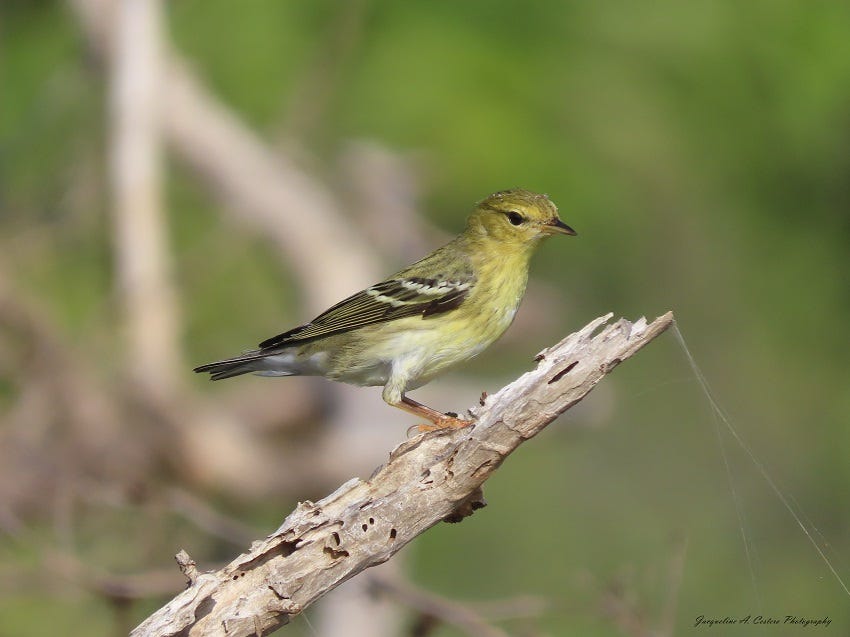Most of Anguilla’s migratory bird species travel to and from North America along the Atlantic Flyway.
Approximately 900 species of birds reside in North America. Seventy percent of those birds migrate. At this time of year, they leave their breeding grounds in the north and move to their wintering locations in the Caribbean and South America.
The primary reason that birds migrate is food. Shorebirds that breed in the Arctic are the first to migrate. Cold weather means less food for both parents and their offspring.
Changes in the amount of daylight trigger hormones in birds that prompt them to begin migration.
How birds choose their route or their final destination is often a mystery. From experience with several banded birds, I can affirm that many individuals return to the same salt pond on Anguilla annually. This is known as site fidelity and is common in species like Ruddy Turnstones. Species like Pectoral Sandpipers only visit Anguilla in the Fall, suggesting they take another route in the Spring.
We know that males of some species differ from females and juveniles when they migrate. Waterfowl species often travel with their young to wintering areas.
Of note is the Blackpoll Warbler that uses Anguilla as a stop-over site during migration. This powerful little bird makes a 2000-mile journey non-stop over water. It is the only North American species to accomplish this feat.
Eighty percent of North America’s migratory species travel at night during lower temperatures. Predation risk is also lower at night as raptors migrate during the day.
This raises an important question. Birdwatchers know that migration occurs generally at the same time each year, but how do you know when the birds are physically on the move?
Enter - BirdCast!
BirdCast is another product of the Cornell Lab of Ornithology and partner organizations. While the entire system is far too complex to explain on this forum, this quote from the BirdCast website sums it up nicely.
“Here at BirdCast, we turn weather radar data into information on the numbers and flight directions of birds aloft in order to expand the understanding of migratory bird movement.”
BirdCast is a free website that provides tools that allow birders and researchers to predict the number of birds migrating at any given time.
The Live Migration Map below shows what is happening across the United States during a single day. It provides current data as well as retrospective information. The short video below provides an example of what you can see.
If you want to know what is happening in your neighborhood, click on the Local Bird Migration Alerts and enter your city. It will bring up a screen like the one below. Note the suggestion to turn out the lights to help the birds as they move. Why should we turn off the lights? The alert tells us all we need to know.
“Bright lights attract and disorient nocturnally migrating birds, potentially causing fatal collisions with buildings or exposure to additional day time hazards. Learn more”
BirdCast “generates forecasts from March 1st to June 1st and August 1st to November 15th during respective Spring and Fall migration seasons for the lower 48 states of the United States.”
Since this is a United States-based product, you might wonder how it helps me here in Anguilla. I keep an eye on bird movement, and as it reaches the southern states, I know many birds will soon be hitting Anguilla’s wetlands to refuel and, in many cases, spend the winter.
Perhaps the flaw in this product is you have no idea what species are on the move. Researchers are working with rooftop sound capture equipment to identify the species. I expect this work will take some time to bear fruit. In the meantime, BirdCast is a valuable tool that birders can use to improve their experience during migration. I think the joy is not knowing what you will see on any given outing.
If you want to learn more about BirdCast and how it works, click this link.
Don’t forget to take a walk on the wild side this weekend!







